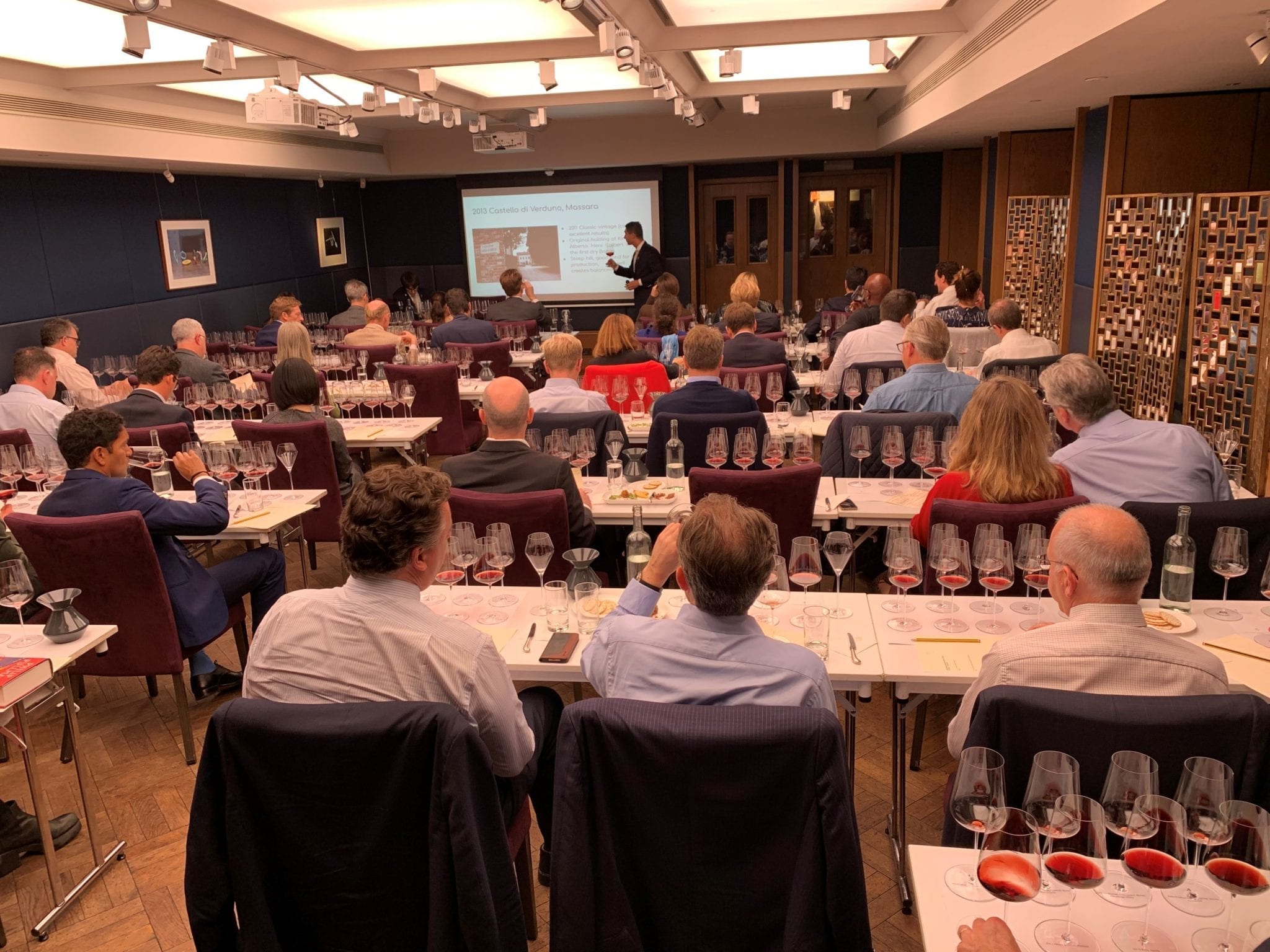The king of wines and the wine of kings – Barolo with Federico & Nelson
On 3rd October, two of our brilliant sommeliers hosted a tasting full of fun and character as they led our Members and their guests through the beautiful, expressive region of Barolo. The Barolo boys promised a highly entertaining, simple yet essential trip through the vines of Barolo, snaking through both the classic and new, up-and-coming producers, and they certainly delivered.
We hear about the event through Nelson’s eyes…
It was a true pleasure to welcome our Members and guide them through some of the most special vines of my home country. If you are a Nebbiolo lover or simply wanted to learn more about one of the most beautiful wine-growing regions on earth, this Masterclass really was an unmissable opportunity to get to grips with Barolo. We began with the producers.
Producers: Traditionalist vs Modernist
Even if the focus seems to be shifted towards the Crus and single vineyards, the most important thing you need to pay attention to is who produces the wine. In a nutshell, the thing that you need to know regarding winemakers in Barolo is to understand if they are Traditionalist or Modernist.
The main difference in the taste of the wine is that Traditionalists age the wines in big Italian botti whilst Modernists use French barriques. Nowadays, understanding these two styles is slightly harder than before because the Modernists are starting to use big botti as well as reducing the use of new French oak creating in certain cases (for example the new vintages of Bric del Fiasc from Paolo Scavino) styles of wine that sit somewhere inbetween. This new trend is pushing the Modernist producers to deny the name that made them famous (top tip – don’t ever ask a modernist if he/she is a modernist!).
Here are some examples of classic Traditionalist/Modernist producers:
Traditionalist: Bartolo Mascarello, Giuseppe Rinaldi, Giuseppe Mascarello e Figli, Giacomo Conterno, Principiano, Castello di Verduno
Modernist: Aldo Conterno, Chiara Boschis, Domenico Clerico, Roberto Voerzio, Cordero di Montezemolo
The MGA aka Cru of Barolo
The Crus of Barolo have many historical facts that are proving the need for their existence as a few centuries back growers knew how to price the grapes according to specific areas like Romirasco, Ravera etc. The main problem of the MGAs is that they are marketed with an in depth analysis of the single cru without a focus on the main village. Imagine to think of La Tache separated from the village of Vosne Romanee. It wouldn’t make any sense, would it?
Barolo, once submerged by the sea, came alive in two main areas with two different soils. One is the Tortonian, based on sand and includes the communes of La Morra and Barolo. Barolo breeds subtle and elegant wines. The other area, the Elvetian is based on clay and includes the communes of Castiglione Falletto, Monforte d’Alba and Serralunga d’Alba. These wines create more powerful, austere and long-lived expressions. No matter the specifics of the Cru, most of the time it will reflect the main geological structure (most of the time…).
Here are some of the best crus from every commune of Barolo:
| Verduno (tortonian) | Monvigliero | Burlotto, Paolo Scavino, Castello di Verduno |
| La Morra (tortonian) | Brunate
Cerequio Rocche dell’Annunziata |
Giuseppe Rinaldi, Roberto Voerzio, Elio Altare, Renato Ratti |
| Barolo (tortonian) | Cannubi
Cannubi Boschi |
Luciano Sandrone, Chiara Boschis, Paolo Scavino |
| Novello (tortonian) | Ravera | Elvio Cogno |
| Castiglione Falletto (elvetian) | Villero
Monprivato |
Giuseppe Mascarello, Giacomo Conterno, |
| Monforte d’Alba (elvetian) | Bussia
Ginestra |
Paolo Conterno, Aldo Conterno, Elio Grasso |
| Serralunga d’Alba (elvetian) | Falletto
Vignarionda Lazzarito |
Giacomo Conterno, Bruno Giacosa, Oddero |
The Vintages
Since 2001, all vintages of Barolo have been exemplary as, usually, when the desired quality is not reached the top producers don’t release the vintage.
There are excellent vintages and minor vintages. The excellent ones are divided into Classic vintages (cold weather) and the arid vintages (the hot ones) whilst the minor vintages are due to the weather being too hot or cold/rainy. When the weather is balanced, it creates good wines with no particular excellence. Here’s a quick chart for you:
| 2000: Climate Change, Arid
2001: Excellent, Classic 2002: Minor, Rainy/Hail 2003: Minor, Torrid 2004: Excellent, Classic 2005: Balanced 2006: Excellent, Classic 2007: Excellent, Arid 2008: Excellent, Classic 2009: Excellent, Arid |
2010: Excellent, Classic
2011: Excellent, Arid 2012: Balanced 2013: Excellent, Classic 2014: Minor, Rainy/Hail 2015: Excellent, Arid 2016: Excellent, Classic 2017: Minor, Torrid 2018: Climate Change, Classic |
The real trick to know which vintage to buy is to pair the two types of excellent vintages with the producer’s style. Traditionalist tends to have better wines in Classic vintages while Modernist in the Arid ones.
“Barolo is a wine worth devoting yourself to.” Battista Rinaldi

